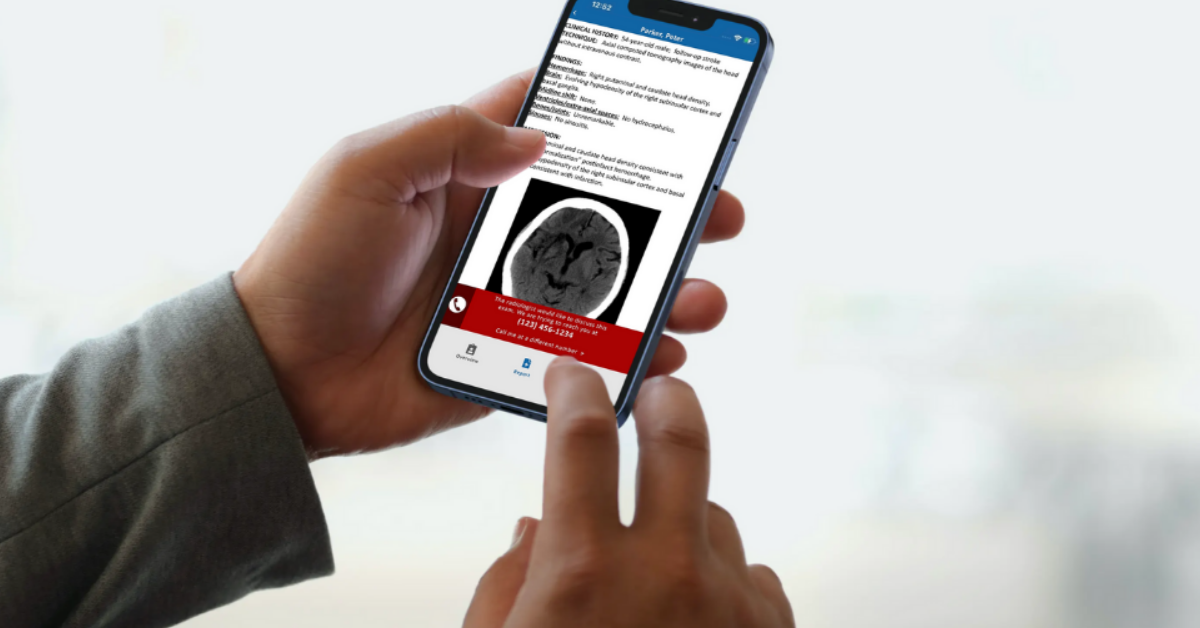vRad Upgrades Radiology Patient Care Indices with Expanded Data and Artificial Intelligence
We have updated our RPC (Radiology Patient Care) Indices to now include five years of data, from 2011-2015. In addition, we have enhanced the...

Remote radiologist jobs with flexible schedules, equitable pay, and the most advanced reading platform. Discover teleradiology at vRad.

Radiologist well-being matters. Explore how vRad takes action to prevent burnout with expert-led, confidential support through our partnership with VITAL WorkLife. Helping radiologists thrive.

Visit the vRad Blog for radiologist experiences at vRad, career resources, and more.

vRad provides radiology residents and fellows free radiology education resources for ABR boards, noon lectures, and CME.

Teleradiology services leader since 2001. See how vRad AI is helping deliver faster, higher-quality care for 50,000+ critical patients each year.

Subspecialist care for the women in your community. 48-hour screenings. 1-hour diagnostics. Comprehensive compliance and inspection support.

vRad’s stroke protocol auto-assigns stroke cases to the top of all available radiologists’ worklists, with requirements to be read next.

vRad’s unique teleradiology workflow for trauma studies delivers consistently fast turnaround times—even during periods of high volume.

vRad’s Operations Center is the central hub that ensures imaging studies and communications are handled efficiently and swiftly.

vRad is delivering faster radiology turnaround times for 40,000+ critical patients annually, using four unique strategies, including AI.
.jpg?width=1024&height=576&name=vRad-High-Quality-Patient-Care-1024x576%20(1).jpg)
vRad is developing and using AI to improve radiology quality assurance and reduce medical malpractice risk.

Now you can power your practice with the same fully integrated technology and support ecosystem we use. The vRad Platform.

Since developing and launching our first model in 2015, vRad has been at the forefront of AI in radiology.

Since 2010, vRad Radiology Education has provided high-quality radiology CME. Open to all radiologists, these 15-minute online modules are a convenient way to stay up to date on practical radiology topics.

Join vRad’s annual spring CME conference featuring top speakers and practical radiology topics.

vRad provides radiology residents and fellows free radiology education resources for ABR boards, noon lectures, and CME.

Academically oriented radiologists love practicing at vRad too. Check out the research published by vRad radiologists and team members.

Learn how vRad revolutionized radiology and has been at the forefront of innovation since 2001.

%20(2).jpg?width=1008&height=755&name=Copy%20of%20Mega%20Nav%20Images%202025%20(1008%20x%20755%20px)%20(2).jpg)

Visit the vRad blog for radiologist experiences at vRad, career resources, and more.


Explore our practice’s reading platform, breast imaging program, AI, and more. Plus, hear from vRad radiologists about what it’s like to practice at vRad.

Ready to be part of something meaningful? Explore team member careers at vRad.
2 min read
Karen Sonnwald
:
March 13, 2020
.png)
Every four minutes someone dies of stroke; it ranks in the top five leading causes of death and disability in the United States. Rapid response can mean the difference between life and death, as well as whether a patient will live with disability due to stroke complications.
But it’s not just about identifying patients who are candidates for treatment. To minimize additional risk to the patient, it’s also critical for clinicians to rule out those who will not benefit from treatment.
“When it comes to interpreting radiology exams, patient safety really hinges on two factors – timeliness of a ‘read’ and the accuracy of the diagnosis,” said Sloan Miller, MD, CPHQ, CPPS, Medical Director at vRad.
vRad, a premier provider of teleradiology services and trusted partner of stroke centers nationwide. Each year, vRad radiologists, including many fellowship trained neuroradiologists, read over 130,000 stroke studies and 8,700 CT cerebral perfusion studies, with specific stroke protocols built into its system to make sure stroke scans receive urgent priority.
A stroke occurs when blood flow to the brain is disrupted by a clot blocking a blood vessel (an ischemic stroke) or a blood vessel rupture (a hemorrhagic stroke). In both cases, the lack of blood flow causes brain cells to die.
For ischemic stroke, many patients who are diagnosed early can be treated with medication or a procedure called mechanical thrombectomy, used to clear the blockage and restore blood flow to the brain. The earlier the intervention, the greater the chance of success.
Patients who have exhibited stroke symptoms for many hours and those with large strokes are or are unlikely to benefit from treatment, and experience a high rate of complications from treatment, such as bleeding in the brain. Because of the risk of additional bleeding, patients with hemorrhagic stroke are not candidates for these treatments.
A basic CT scan is the first line imaging test for patients with stroke symptoms. A CT scan can detect blood in the brain and, depending on the situation, may help assess the size and age of a stroke. A CT scan may also uncover another medical condition that is mimicking stroke symptoms.
vRad's Stroke Protocol is designed to provide rapid radiology response for stroke patients. On average, vRad radiologists provide a report to the ordering physician within 7 minutes of receiving the scan. vRad incorporates several strategies to ensure a timely, accurate diagnosis including:
Learn about vRad’s stroke protocols
Learn about vRad use of AI to identify potential critical pathologies
This post originally appeared on MEDNAX.com on Mar 13, 2020 https://blog.mednax.com/rapid-response-in-stroke-patients-is-the-picture-of-patient-safety
Back to Blog
We have updated our RPC (Radiology Patient Care) Indices to now include five years of data, from 2011-2015. In addition, we have enhanced the...
.png)
The video below includes images from the actual CT study of a COVID-19 patient in the United States. As this disease spreads rapidly worldwide, chest...

Originally published by Michael Walter on Radiology Business In radiology, it is vital for radiologists to connect with the entire patient care team...
vRad (Virtual Radiologic) is a national radiology practice combining clinical excellence with cutting-edge technology development. Each year, we bring exceptional radiology care to millions of patients and empower healthcare providers with technology-driven solutions.
Non-Clinical Inquiries (Total Free):
800.737.0610
Outside U.S.:
011.1.952.595.1111
3600 Minnesota Drive, Suite 800
Edina, MN 55435